May 22, 2025 4:33 am
I’m staying with herons… so why not
the black-capped night heron
Learn about the black-capped night heron, its habits, and unique daytime sightings along water’s edges in this insightful nature blog.
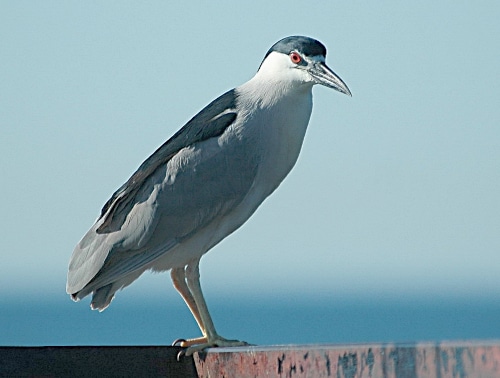
black-capped night heron
Never mind the name, the Black-Capped Night Heron is often seen during the daytime.
Also known as the Black-Crowned Night Heron.
Frequently found at the water’s edge at dusk and dawn, the night heron is a much smaller variety of heron than the egret and the great blue.
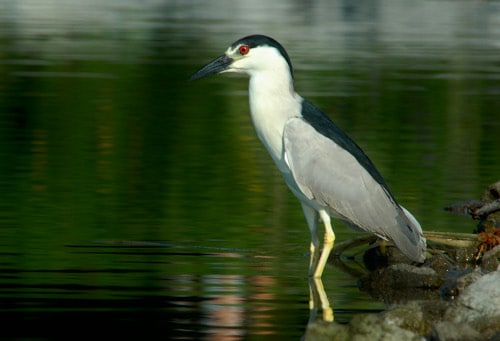
At Colonel Sams
Many of my sightings have been at locations like Etobicoke Creek, the creek that divides Etobicoke and Mississauga, on the northern shore of Lake Ontario, Colonel Samuel Smith Park, the lakefront park in Etobicoke, a favorite watering hole -the Evergreen Brick Works ponds, on Bayview Avenue, Toronto and High Park –at the Grenadier Pond.
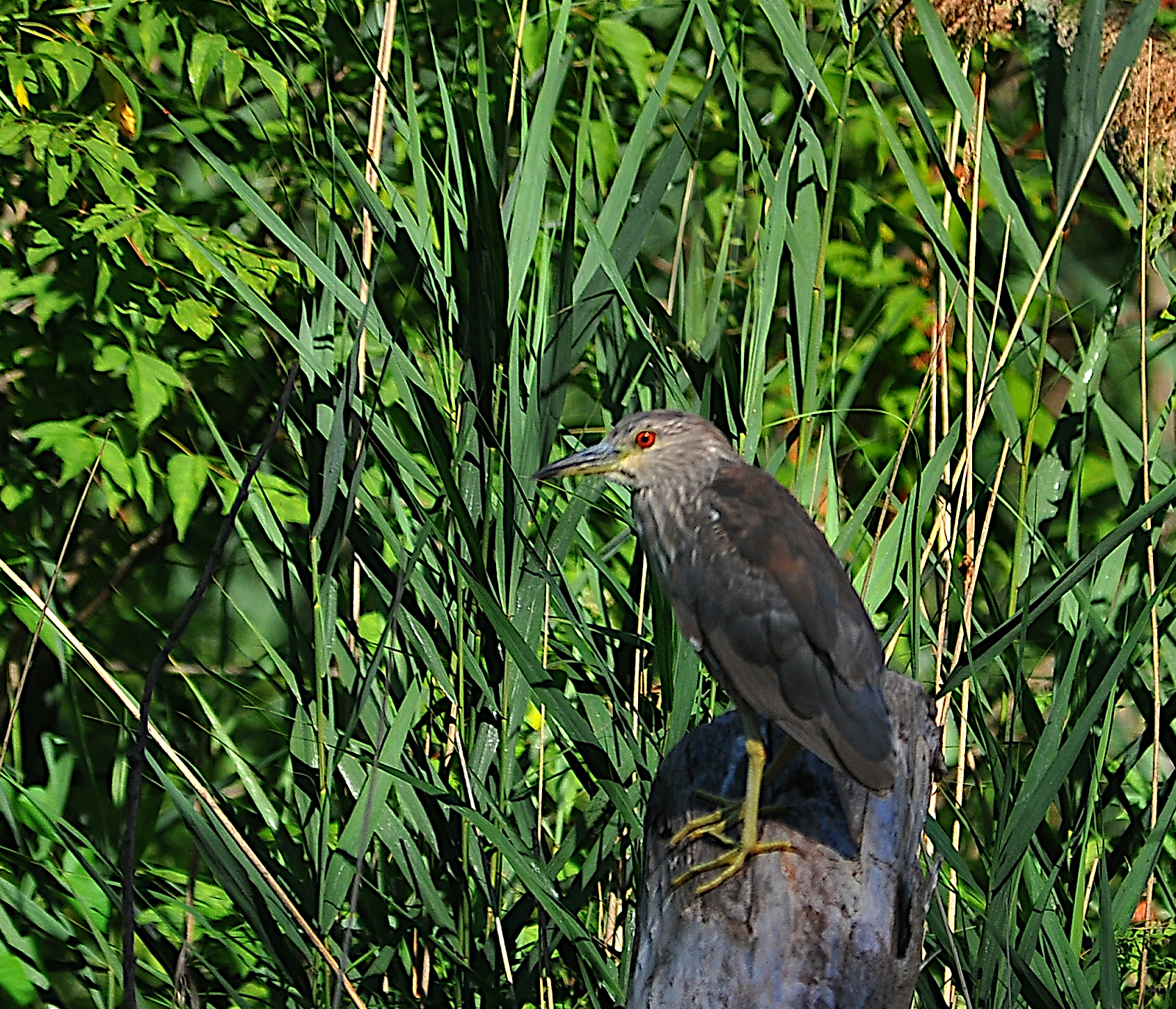
ol’ red eyes
Walking around Grenadier Pond in High Park, Toronto, at first, I thought that I had found something unique to my bird watching, I could not identify readily.
Actually, even later, after identifying, it still remained unique to my finds!
First quick look.. oh a rapture.
Nope… there was no hook on its beak and no talons.
It has the shape and size of a black capped night heron.
Where’s its grey jacket and white neck and black crown?
So I dismissed that summation.
A green heron perhaps, as I had never seen a green heron before, it was only a stabbing guess.
I don’t consider myself a birder as such, more of a photographer of certain birds I find an interest in.
Albeit my camera seems to have a mind of its own and fires off storage cards full of nature’s subjects, that I then have to database and categorize.
There was a sense of familiarity with this bird.
Wait a minute…..
I know those red eyes of yours!
A juvenile Black-Capped Night Heron!
Now I know!
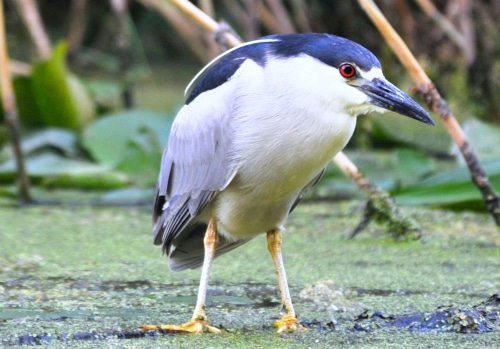
Plumed black-capped night heron
The above and below images show the topknot, a bead of feathery growth [plume] that appears at the back of the neck, signifying a matured adult.
Adults are mature around the 3-4th year.
The life span often extends past 15-20 years.
There is little distinction between males and females except size, even then, unless the two were spotted together, it is not an instantaneous identifier, but the male is generally the larger of the two.
Nesting is preferred in trees and in colonies, sometimes with other heron species. Another favorable nesting area is among the marshes.
They will frequently rear other black-capped night herons’ chicks if the chicks inadvertently wander into another’s nest.
The diet may consist of aquatic life, frogs, snakes, worms and even carrion.
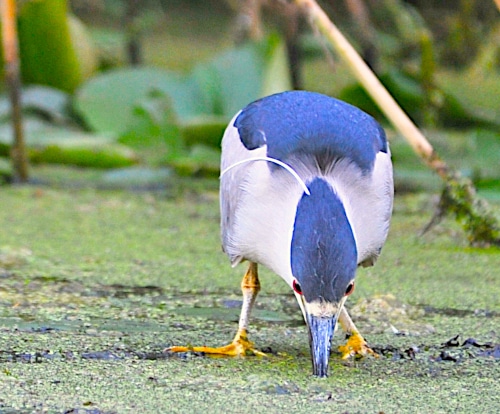
dipping the beak
Employing the beak- dipping method.
It surely requires some patience and when pulling back with an empty beak, the bird would walk along the floating log uttering squawks and throaty croaks as if in frustration, only to settle down and try again.
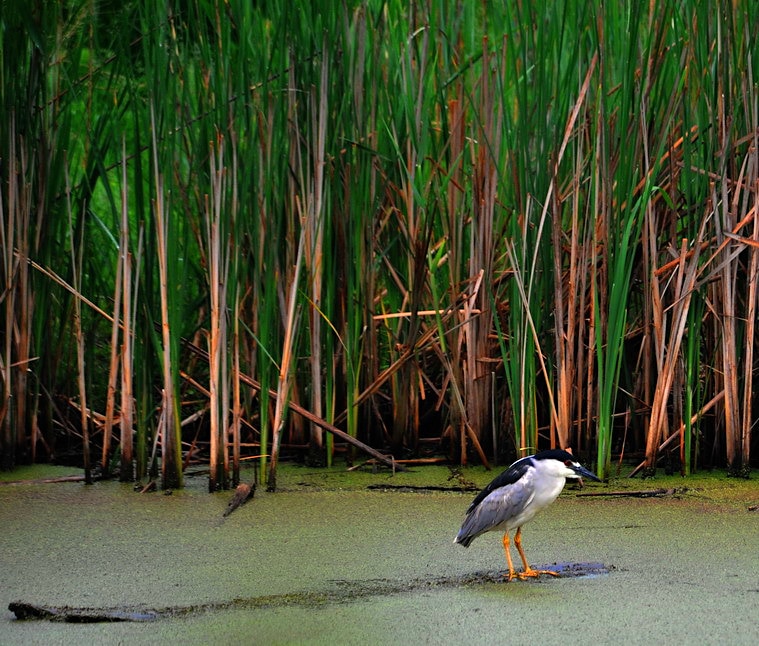
late afternoon pose
Often seen at night, [hence the name] frequently around sunsets and sunrises.
The black-capped night heron is enjoying its surfboard moment, as the sun’s rays are going down.
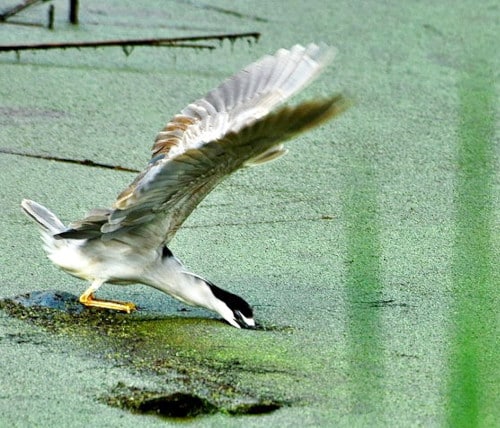
into the green yonder
Nose diving into the duckweed, this heron thought that it might be worth getting its face wet.
Nope, not that time!
The black-capped night heron at the Brick Works had a variety of opportunistic fishing methods that I was able to monitor for several hours.
After flying into the pond area, it perched on one of the several floating, semi submerged logs and waited for fish to disrupt the surface -perhaps for a bubble of air.
That was the striking cue.
It was not the most successful method that I observed, but the pond water disturbed by the surfacing fish, was indicative of the presence of a possible food item.
It was the only way to tell, the bloom of duckweed made it impossible to see into the pond water.
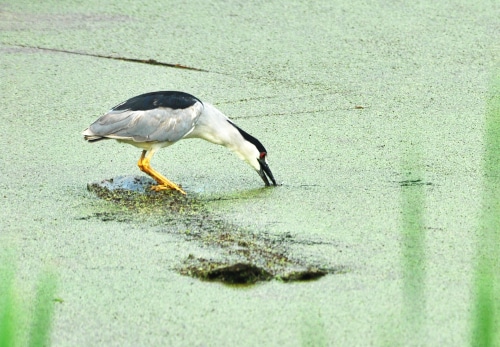
beak dipper
The alternative method of fishing was to gently lower the opened beak into the pond, sometimes drawing slow small semi- circles… fishing!
It may have been utilizing its tongue as an attractive lure.
The fish would investigate the possibility of a wriggling morsel, and the black-capped night heron clamped down, closed its beak and gently brought the fish out of the pond.
No fuss!
No splash!
Effortlessly -and with a high success rate.
I watched in awe.
Then set up to record, hopefully, the next sequence.
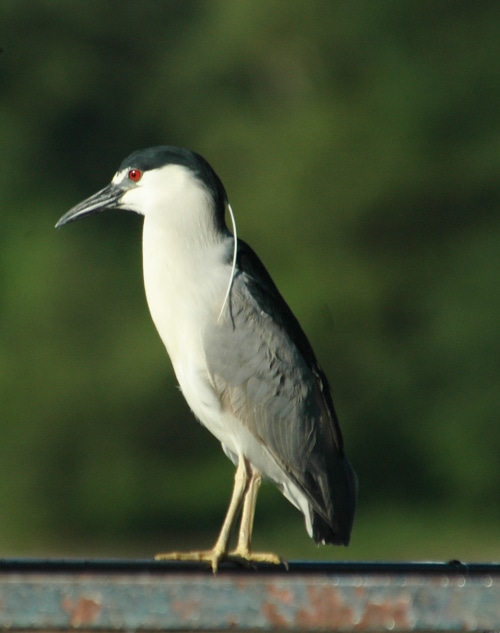
AT THE creek
I like to try out different settings on my camera.
During episodes of photographing terns at the Etobicoke Creek estuary {see my blog Tern on a magical Wing Beat}, I started to use a burst mode setting, which would fire several shots – in rapid succession, to try to capture the moment and flying pose that I wanted.
This method returned many successful results., especially when using handheld camera and tracking mode was enabled.
A further camera setting I would test and use, would be from the menu settings: continuous mode
timer mode
delay mode.
If your camera has these settings available, it is fun in trying them out to increase your camera equipment understanding and creativity.
Hate to add it here, but that’s what the boring thick manuals are for!
OneForTheDay by Nats.
Nats, a photographer, writer, and contributing editor for natwild.com and the OneForTheDay blog, is reachable through this site. Feel free to log in, subscribe, and leave comments.
Please leave a comment below.
Register / Login required to comment

